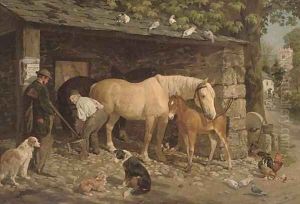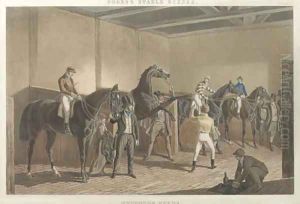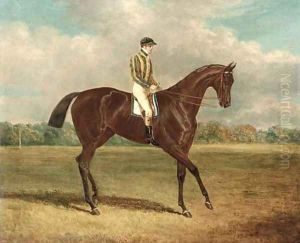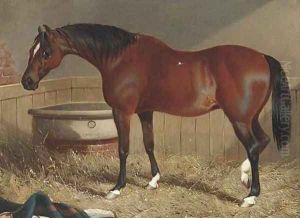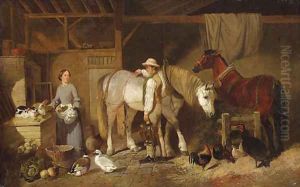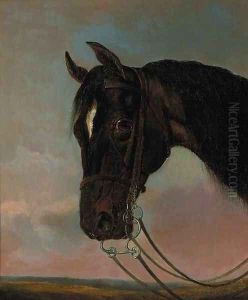John Frederick Snr Herring Paintings
John Frederick Herring Sr. was a notable 19th-century British painter, famous for his work depicting horses and rural landscapes. Born on September 12, 1795, in London, England, Herring's journey to becoming a celebrated artist began in humble circumstances. Initially working as a coachman, his love and understanding of horses were deeply ingrained in his early life, laying the foundation for his later work as an artist.
Despite his lack of formal artistic training, Herring's natural talent for drawing and painting horses quickly garnered attention. By the 1820s, he had established himself as a leading painter of equestrian subjects, capturing the essence of the British countryside and its equine inhabitants with remarkable accuracy and beauty. His work appealed to a broad audience, including members of the British aristocracy, for whom he received numerous commissions.
Herring's artistic career spanned over four decades, during which he produced a vast body of work that included rural landscapes, hunting scenes, and, most notably, portraits of racehorses and their jockeys. His paintings were celebrated for their detailed realism, vibrant color, and dynamic composition. He was particularly adept at capturing the muscular physiques and spirited expressions of horses, making his work highly prized among horse enthusiasts and art collectors alike.
In addition to his paintings, Herring also produced a number of engravings that helped to popularize his work. He was involved in the agricultural shows of the time, often serving as a judge, which further cemented his reputation as an authority on horses. Throughout his career, Herring remained closely connected to the rural lifestyle that inspired his art, living in various locations in the English countryside.
John Frederick Herring Sr. passed away on September 23, 1865, in Tunbridge Wells, Kent. His legacy endures through his sons, John Frederick Herring Jr., Charles Herring, and Benjamin Herring, who followed in their father’s footsteps to become painters. Today, Herring Sr.'s works are held in high esteem and can be found in art collections and museums around the world, celebrated for their contribution to British equestrian and rural art.
